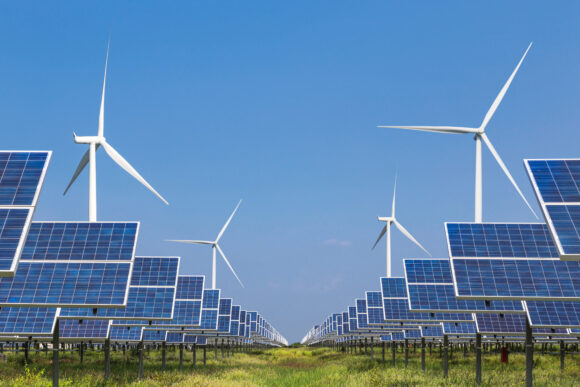The Trump administration is expected as soon as Aug. 18 to take another step toward curbing the growth of renewable energy in the United States by making it harder for companies to claim federal tax subsidies for wind and solar energy.
The Treasury Department next week will reach a 45-day deadline, set by U.S. President Donald Trump in July, to revise rules governing who can qualify for clean energy tax credits that the Republicans’ One Big Beautiful Bill Act is phasing out years earlier than planned.
The rule under scrutiny centers around what it means for a project to be considered under construction, a definition that is critical to companies building facilities that require years of planning.
The OBBBA requires projects to begin construction by July of next year or enter service by the end of 2027 to qualify for a 30% tax credit and bonuses that can push the subsidy even higher. Under previous law, the credits were available through 2032.
In an executive order last month, three days after signing the OBBBA into law, Trump directed Treasury to restrict the use of safe harbors, rules that have allowed project owners for years to claim tax credits so long as they incur 5% of their costs or make meaningful physical progress before the credit expires.
Washington policy advisory firm Capstone said it could see Treasury requiring developers to incur a higher percentage of costs, such as 10% or 15%. Under the physical work requirement, the agency could exclude off-site construction or require more contact with the government and proof of continuous work.
The Treasury Department did not respond to a request for comment.
Tightening the requirements would be the latest in a string of steps the administration has taken to stall development of wind and solar energy, which Trump says are unreliable, expensive, and dependent on Chinese supply chains.
According to advisory firm Clean Energy Associates, the United States could lose about 60 gigawatts of planned solar capacity through 2030 if stricter “beginning of construction” rules are implemented. That would be enough electricity to power about 10 million homes.
Project developers and financiers have leaned on the tax credit rules to guide their investment and construction decisions for the last decade.
“The executive order and the uncertainty has actually had a more negative impact than the legislation itself,” said Reagan Farr, CEO of solar project developer Silicon Ranch.
In the six weeks since the executive order, some companies have stalled progress, while others have ramped up activity to start as many projects as possible, said Javad Asghari, a partner with the law firm Simpson Thacher who focuses on energy and infrastructure projects.
Aaron Halimi, founder and president of San Francisco-based solar project developer Renewable Properties, described measures his company has taken to protect its access to subsidies he fears could be at risk.
“We’ve taken many steps to safe harbor a large portion of our pipeline of projects we plan to deliver between now and end of 2029,” Halimi said, including buying transformers and American-made panels, and increasing lines of credit for purchasing equipment.
Topics Politics
Was this article valuable?
Here are more articles you may enjoy.



 Cloudy Future for Bourbon Has Jim Beam Closing Distillery for a Year
Cloudy Future for Bourbon Has Jim Beam Closing Distillery for a Year  Is the AI Boom a Bubble Waiting to Pop? Here’s What History Says
Is the AI Boom a Bubble Waiting to Pop? Here’s What History Says  Longtime Motel 6 Spokesman Tom Bodett Settles Lawsuit Against Chain
Longtime Motel 6 Spokesman Tom Bodett Settles Lawsuit Against Chain  Severity Was Up, But Will Falling Claims Volume Impact the Profession?
Severity Was Up, But Will Falling Claims Volume Impact the Profession? 

